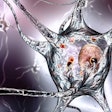
Diagnostic testing for any new virus is crucial to its containment, but since the COVID-19 outbreak began, the U.S. has made a number of missteps that have prevented an effective response, according to a viewpoint published online March 9 in JAMA.
Those mistakes include limiting testing to the U.S. Centers for Disease Control and Prevention (CDC) and initially restricting it to a particular set of patients, wrote a team led by Dr. Joshua Sharfstein of Johns Hopkins Bloomberg School of Public Health.
"The current situation exemplifies the challenge of how to best utilize testing during outbreaks of novel pathogens," the authors wrote. "The initial testing criteria were too narrow to monitor and control the spread of the disease."
The U.S. response to the coronavirus outbreak has not been as effective as it could have been, the group wrote. In their article, Sharfstein and colleagues described three factors that have confounded effective action against the virus:
- Technical challenges. Technical challenges with the first test developed by the CDC "left the nation with minimal diagnostic capacity during the first few weeks of the epidemic," they wrote. The CDC's test differed from another test developed by the Robert Koch Institute in Germany and adopted by the World Health Organization (WHO), and although it was eventually distributed to state and local public health labs, these facilities had difficulty confirming results.
- Red tape. On February 29, the U.S. Food and Drug Administration expanded the country's testing capacity by eliminating a requirement that laboratories secure an emergency use authorization (EUA) before using tests they developed on their own. "Since the FDA announcement, [a] New York State laboratory announced it had received an EUA to test for the novel coronavirus," the group wrote. "As of March 5, other laboratories are expected to begin testing soon, and it is anticipated that testing will be far more available nationwide by mid-March."
- Narrow testing population. Initially, testing was limited to people with known exposure, Sharfstein and colleagues wrote. "The delayed discovery of a case of COVID-19 in California, followed quickly by evidence of community transmission in multiple states, revealed the shortcomings of that strategy," they noted. As of March 4, the CDC dropped specific guidance on who should be tested and stated that healthcare providers should "use their judgment to determine if a patient has signs and symptoms compatible with COVID-19."
Sharfstein and colleagues urged policymakers to consider innovative approaches, such as drive-through testing, but also to emphasize traditional modes of virus control such as hand-washing, the isolation of exposed patients, and social distancing measures.
"As the [U.S.] moves to make up for initial missteps, emerging evidence should guide policy and practice," they concluded. "The public health and medical communities should recognize the need to alter policy to fit changing circumstances and support consistent and compassionate messaging that recognizes both the benefits and limitations of testing."



















